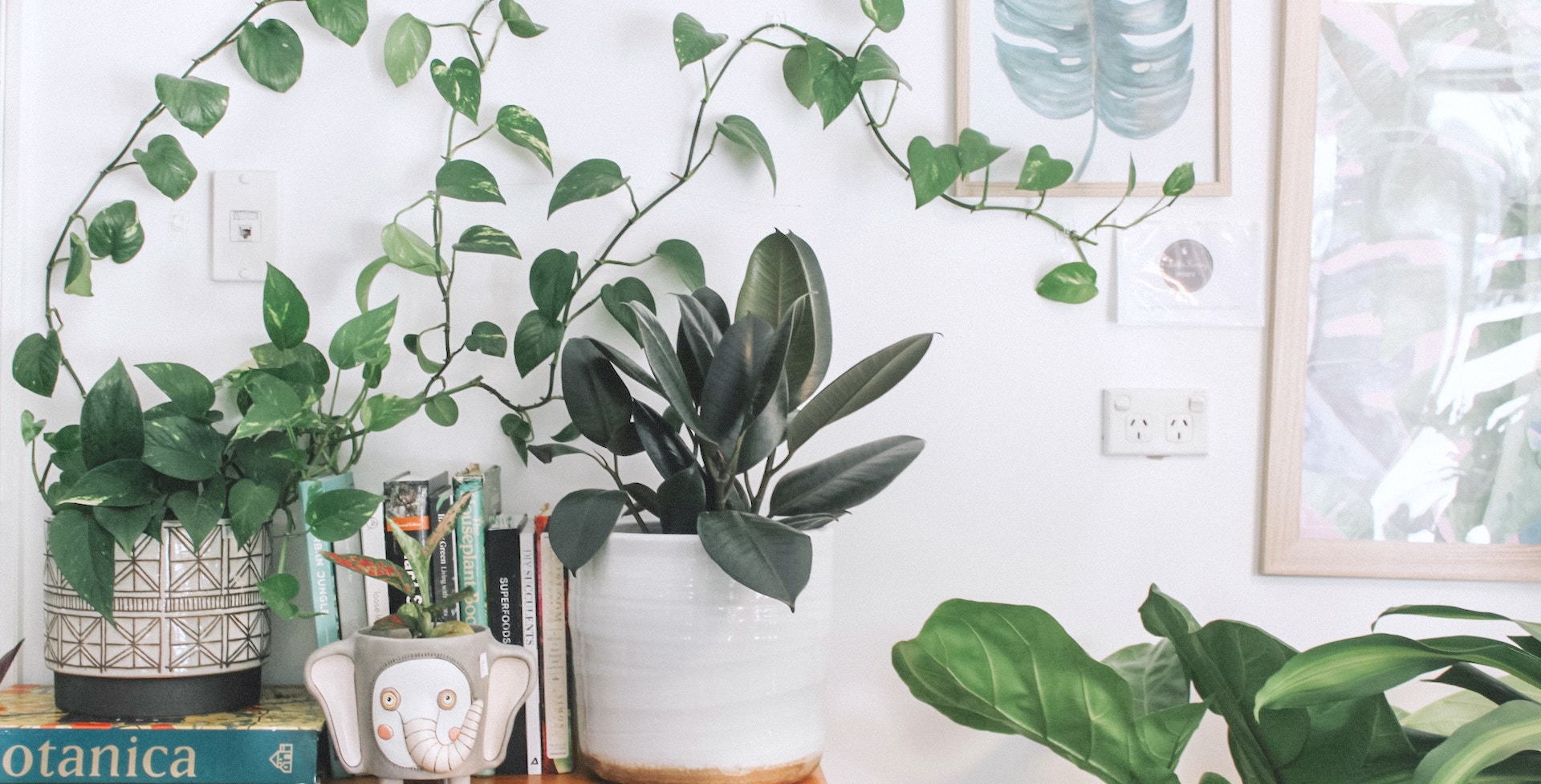Indoor air quality has much to desire, and we spend quite a bit of time inside. It is now quite common knowledge that many items in our interior space off-gas, from our sofa and beds to our cabinetry.
If you have any particleboard, then you are exposed to formaldehyde from the glue. These chemicals release over time (how long we don’t know) – another reason to buy solid wood. Other sources of off-gassing include common household cleaners and air fresheners. Aside from using natural products, air filters, and making better informed consumer choices, what else can we do to improve indoor air quality?
In the late 1980s NASA conducted a survey to see which plants were the most effective at filtering out these pollutants. To this day people still refer to this list. You can read about these plants in How to Grow Fresh by environmental engineer Dr BC Wolverton, the lead scientist in the NASA study. The chemicals they focused on were formaldehyde, toluene, ammonia, benzene, trichloroethylene, and xylene. Some their effects include eye irritation, dizziness, swelling of the lungs, and increased heart rate. The severity of the symptoms depends on the amount and duration of exposure, as well as the overall health of the individual.
To help filter out these toxins and to improve indoor air quality, you can choose from 50 common houseplants. These plants filter out different chemicals and some plants filter all of them, like the Peace Lily. Try for one good-sized (6″ to 8″ pot or bigger) plant per 100 square feet.
The caveat is that some of these plants, like the Peace Lily, are toxic to dogs, cats, rabbits, and parrots, if eaten.

Below I’ve included a short list – Areca Palm, Dwarf Date Palm, Boston Fern, Kimberly Queen Fern, Spider Plant, Chinese Evergreen, Bamboo Palm, Weeping Fig, Devil’s Ivy, Flamingo Lily, Lily Turf, Broadleaf Lady Palm, Barberton Daisy, Cornstalk Dracaena, English Ivy, Varigated Snake Plant, Red-Edged Dracaena, Peace Lily, and Florist’s Chrysanthemum.
This table shows the chemicals each plant filters out thereby improving indoor air quality. Also included is whether they are pet-friendly.
| Areca Palm | Formaldehyde + Toluene | Dogs + Cats – Ok |
| Dwarf Date Palm | Formaldehyde + Xylene | Dogs + Cats – OK |
| Boston Fern | Formaldehyde + Xylene | Dogs + Cats – OK |
| Kimberly Queen Fern | Formaldehyde + Xylene | Dogs + Cats – OK |
| Spider Plant | Formaldehyde + Xylene | Dogs + Cats – OK |
| Bamboo Palm | Formaldehyde + Xylene | Dogs + Cats – OK |
| Weeping Fig | Formaldehyde + Xylene | Not pet-friendly |
| Chinese Evergreen | Formaldehyde + Benzene | Not pet-friendly |
| Devil’s Ivy | Formaldehyde + Xylene + Benzene | Not pet-friendly |
| Flamingo Lily | Formaldehyde + Xylene + Ammonia | Not pet-friendly |
| Broadleaf Lady Palm | Formaldehyde + Xylene + Ammonia | Dogs + Cats – OK |
| Lily Turf | Trichloroethylene + Xylene + Ammonia | Dogs + Cats – OK |
| Barberton Daisy | Trichloroethylene + Formaldehyde + Xylene | Dogs + Cats – OK |
| Cornstalk Dracaena | Trichloroethylene + Formaldehyde + Benzene | Not pet-friendly |
| English Ivy | Trichloroethylene + Formaldehyde + Benzene + Xylene | Not pet-friendly |
| Varigated Snake Plant | Trichloroethylene + Formaldehyde + Benzene + Xylene | Not pet-friendly |
| Red-Edged Dracaena | Trichloroethylene + Formaldehyde + Benzene + Xylene + Ammonia | Not pet-friendly |
| Peace Lily | Trichloroethylene + Formaldehyde + Benzene + Xylene + Ammonia | Not pet-friendly |
| Florist’s Chrysanthemum | Trichloroethylene + Formaldehyde + Benzene + Xylene + Ammonia | Not pet-friendly |
Looking for inspirations for your plants? (Refresh your page if these images don’t show up at first)





